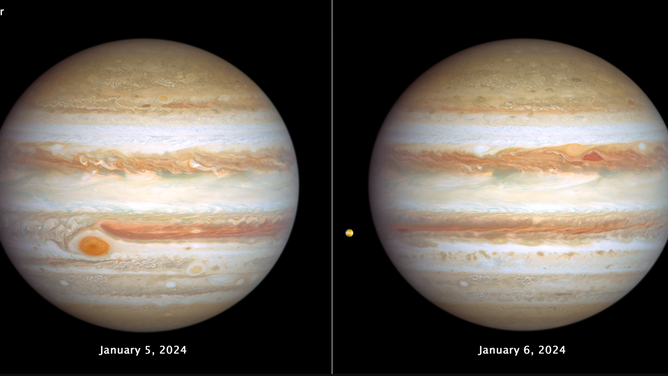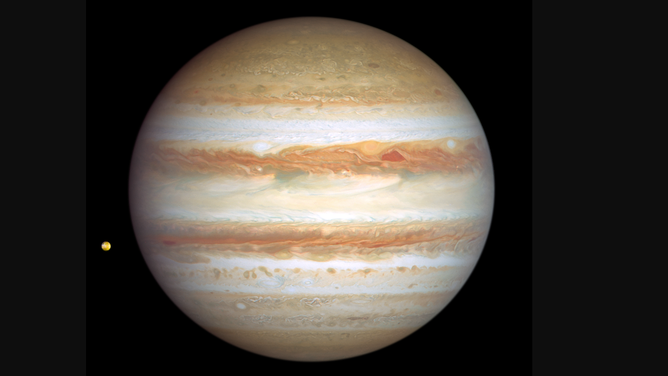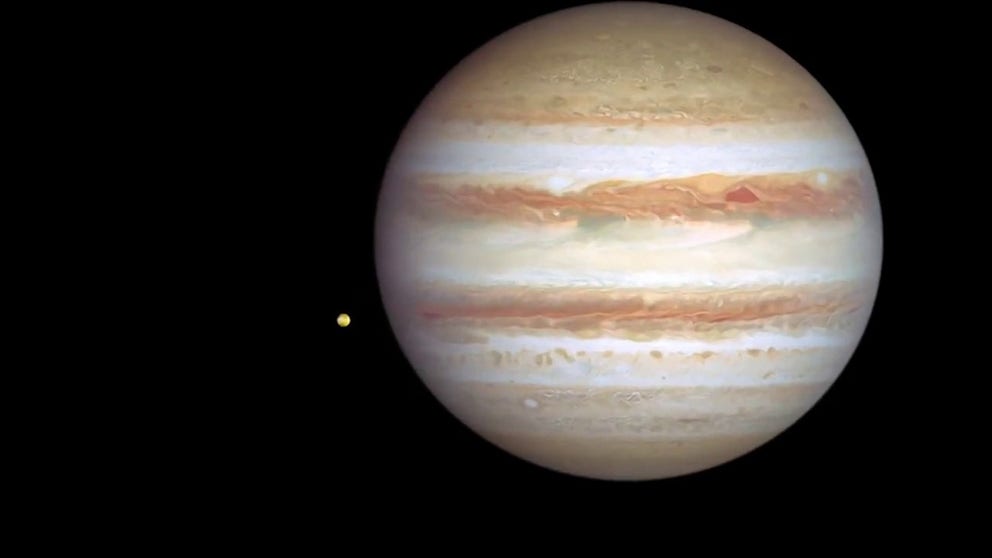NASA's Hubble telescope captures Jupiter's giant storms swirling
Jupiter's atmosphere is pockmarked with massive cyclones, including the most famous, the Great Red Spot, which is wider than Earth. Hubble shows several large cyclone systems that will move past each other on Jupiter.
Hubble Space Telescope tracks Jupiter's changing storms
The giant planet Jupiter, in all its banded glory, takes the spotlight in these new images from NASA's Hubble Space Telescope that capture both sides of the planet. (Video credit: NASA's Goddard Space Flight Center, Paul Morris/Aaron E. Lepsch | Music credit: "From Seedling to Something" by Matt Norman)
Recent images of Jupiter taken by NASA's Hubble Space Telescope put the gas giant's constantly changing weather on display.
Jupiter's atmosphere is pockmarked with massive cyclones, including the most famous, the Great Red Spot, which is wider than Earth.
Images taken by Hubble in January show the changing weather on both sides of Jupiter. The images were taken as part of the Outer Planet Atmospheres Legacy (OPAL) program. Every year, Hubble monitors Jupiter, Saturn, Neptune and Uranus as part of the ongoing OPAL observations.
JAMES WEBB SPACE TELESCOPE CAPTURES JUPITER'S SWIRLING WEATHER, COLORFUL AURORAS AND RINGS

The giant planet Jupiter, in all its banded glory, is revisited by NASA's Hubble Space Telescope in these latest images, taken on January 5-6, 2024, capturing both sides of the planet. (Image credits: NASA, ESA, STScI, Amy Simon (NASA-GSFC)
(NASA)
In the image on the left, you can see the Great Red Spot and another feature in the lower right known as Red Spot Jr. The swirling storms move in opposite directions and are expected to pass each other every 2 years. According to NASA, the smaller feature resulted from storms merging between 1998 and 2000.
NASA said this year, the smaller storm is regaining its red tint. Red Spot Jr. turned red in 2006 before returning to a pale beige color.
In the right image, storm activity is ongoing in the opposite hemisphere. According to NASA, a pair of storms – a deep red cyclone and a reddish anticyclone – are next to each other near the center of the image.
"The many large storms and small white clouds are a hallmark of a lot of activity going on in Jupiter's atmosphere right now," said OPAL project lead Amy Simon of NASA's Goddard Space Flight Center.
SPACEX ACHIEVES HISTORIC MILESTONE LAUNCHING STARSHIP INTO ORBIT
Similar to atmospheric patterns on Earth, these systems are spinning in opposite directions, creating high- and low-pressure systems. As the systems move in opposing clockwise and counterclockwise rotations, NASA said the storms will "bounce past each other."
Hubble also captured Jupiter's moon, Io, known as our solar system's most volcanically active body. The volcanic moon can be seen to the left of Jupiter in the image below.

A January 6, 2024 image of Jupiter and one of its moons, Io, taken by the Hubble Space Telescope. (Image: Credits: NASA, ESA, STScI, Amy Simon (NASA-GSFC)
(NASA)
